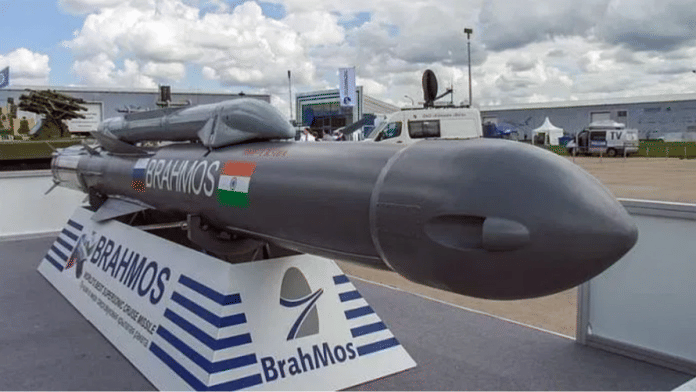New Delhi: During Operation Sindoor, the United States which had received intelligence suggesting that India had launched BrahMos cruise missiles to strike targets inside Pakistan, feared that India might arm BrahMos with nuclear warheads if the conflict with Pakistan escalated, says a report published by the Wall Street Journal (WSJ).
The report, which cites current and former officials from the Trump administration, says that U.S. intelligence assessed the BrahMos missile, jointly developed by India and Russia, as a weapon capable of carrying nuclear warheads.
“Trump feared that India might decide to equip one of the missiles with a nuclear bomb if the crisis spiraled out of control, officials said, or that Pakistan could decide to launch a nuclear device of its own, leading Trump to encourage Vance and Secretary of State Marco Rubio to call their counterparts,” reads the WSJ report, published Saturday.
India has consistently maintained that the BrahMos supersonic missile is strictly a conventionally armed weapon system. It is operated by the Indian Army, under the Artillery Regiment, Indian Air Force and the Indian Navy, and does not fall under the purview of the Strategic Forces Command (SFC), the tri-service body responsible for managing the country’s nuclear arsenal. The SFC oversees the storage, handling and deployment of nuclear-capable systems to ensure credible deterrence and BrahMos is not part of its inventory.
The missile is designed to carry a conventional warhead weighing between 200 to 300 kilograms and is widely regarded as a high-precision, non-nuclear tactical weapon.
According to the WSJ report, Trump’s apprehensions stemmed from fears of the India-Pakistan conflict escalating into a nuclear exchange. The White House, the WSJ says, believed the situation was volatile enough for direct intervention to be warranted.
A White House official quoted in the report said that Trump had leveraged his personal relationships with both New Delhi and Islamabad to prevent what the administration feared could become a nuclear confrontation. The official, however, declined to comment on whether India’s use of the BrahMos specifically prompted those concerns.
Meanwhile, responding to questions about the missile’s deployment during the operation, officials at the Indian embassy in Washington told the WSJ that India adheres to a “No First Use” nuclear doctrine and that the use of BrahMos should not have triggered concerns about nuclear escalation.
During the hostilities with Pakistan in early May, India had fired several BrahMos supersonic cruise missiles at key Pakistani military installations. The air and ground variants of the BrahMos, a joint venture between India and Russia now manufactured domestically, were said to be central to the destruction of key targets, including Pakistani air force’s runways, bunkers and hangars.
The BrahMos (named after India’s Brahmaputra and Russia’s Moskva rivers) remains the only supersonic cruise missile in operational service anywhere in the world, capable of reaching speeds up to Mach 2.8 (approx. 3,450 kmph). It has been jointly developed by India’s Defence Research and Development Organisation (DRDO) and Russia’s NPO Mashinostroyeniya under a strategic partnership launched in 1998.
The missile system, now manufactured domestically, has been integrated into the armed forces for various roles, including anti-ship, land-attack and coastal defence missions. Its versatility and speed make it a key component of India’s tactical strike capabilities.
Its cruising altitude can reach up to 15 km, while its terminal phase can bring it as low as 10 metres above the ground or sea surface, making interception by traditional air defence systems extremely difficult.
The missile follows a two-stage propulsion system. The first stage involves a solid propellant booster that accelerates the missile to supersonic speeds, after which a liquid-fuelled ramjet engine engages during the cruise phase. BrahMos operates on a “fire-and-forget” principle, requiring no mid-course guidance once launched, and is known for its high manoeuvrability and radar-evading capabilities.
(Edited by Viny Mishra)
Also read: Mega BrahMos missile deal expected later this yr, 2nd foreign order on the horizon after Philippines






